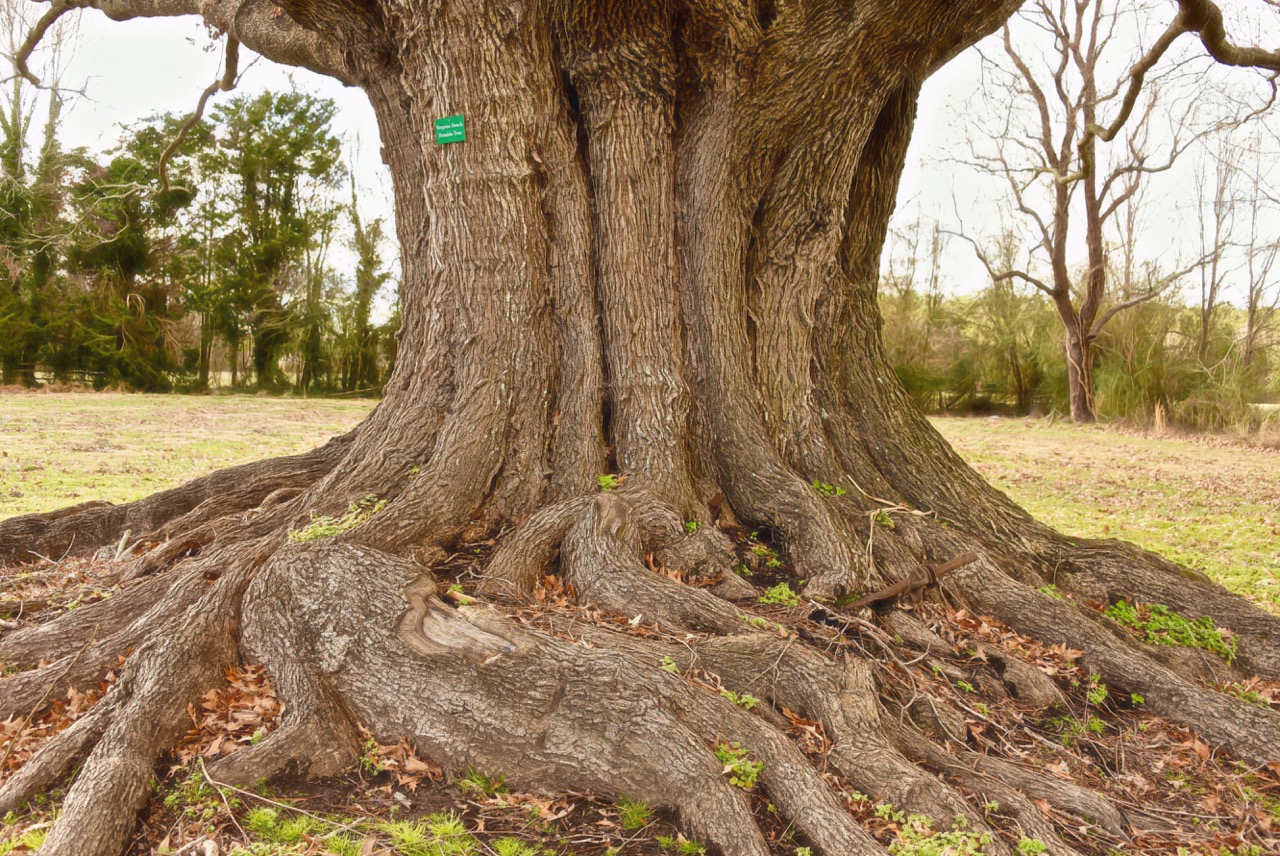
The beautiful cherrybark oak that grows in solitary splendor in Blackwater is more than possibly the largest tree and oldest living thing in Virginia Beach.
The 500-year-old oak also has got to be the strongest, most muscular living thing we have ever seen around here.
Look at the cherrybark’s trunk and roots in this photo by Pam Monahan. You may have seen Pam’s full view of the tree that is one of the award winning photos from the Virginia Beach Wildlife Festival photo contest.
The tree’s trunk looks like it has real muscle. It’s ripped and ready to face anything the world might throw at it. Its big roots are sinewy and strong. They twist around and around the tree, eating up anything in its path.
Notice the rusted piece of farm equipment on the left that the roots have gobbled up as the tree grew.
I’ve been so in awe of the tree’s beauty. Now, because of Pam’s striking photo, I’m equally in awe of the cherrybark’s brawny show of strength.
According to my trusty “Common Native Trees of Virginia,” the cherrybark is a variety of a southern red oak, one of at least 11 species of oaks in southeastern Virginia.
Cherrybarks most often are found growing in rich low lands near rivers. In this case, the North Landing River nearby is this oak’s home river.
Like most oaks, cherrybark oaks do their share to help make the world go round. Its acorns are food for many birds and mammals. Its branches provide nesting sites and its leaves, food for insects and pollinators and shade for humans.
No telling how much carbon dioxide this giant absorbs from the atmosphere or how much water it can drink to help prevent flooding. All cherrybark oaks grow straight and tall, yielding strong timber, which is no surprise when you see that powerful trunk.
It’s said the oak’s bark looks like that of a black cherry tree, hence its name, cherrybark. But I venture to say no bark looks like the massive bark that protects this special tree!
The cherrybark, like many oak species, has pointed lobed leaves. Cherrybark leaves are said to look like pagodas, because the lobes are tiered, usually from big to little, hence the tree’s Latin name, Quercus pagoda.
Oak leaves, in general, have long been used as symbols of strength by militaries and kings in many countries.
But am sure no one could really know what a tower of strength an oak could be if they hadn’t seen this cherrybark oak.
Pam Monahan, a member of Lynnhaven River NOW’s tree committee, also writes a blog about a pair of eagles nesting in a big pine tree at Honey Bee Golf Club. Tune in. A blessed event is expected before too long! http://honeybeeagles.blogspot.com/